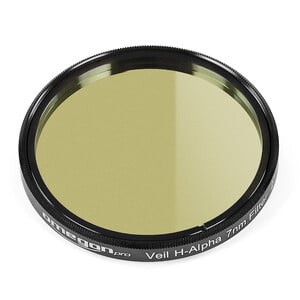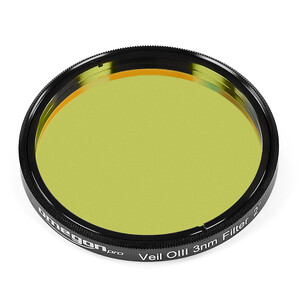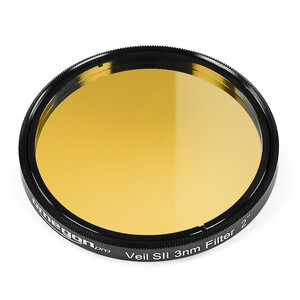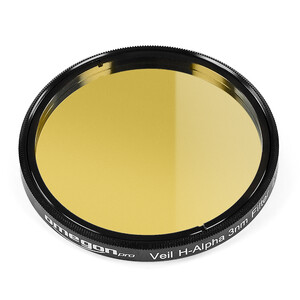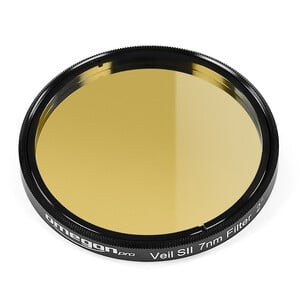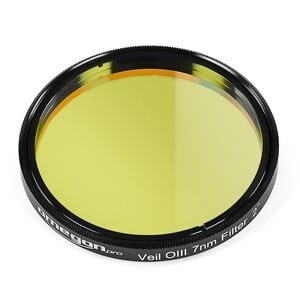Hidden in the light – the colours of emission nebulae
There are a large number of lights in and around human settlements. This lighting not only helps us to find our way in the dark, it also brightens up the sky. Faint celestial objects then disappear – they are obscured by the artificial sky brightening.
In contrast to stellar objects such as globular clusters and galaxies or reflection nebulae, such as the blue glow around the Pleiades, emission nebulae emit their light in very specific colours. The brightest of these so-called emission lines are
- H-Alpha: 656.3 nm
- H-Beta: 486.1 nm
- O-III_1: 495.9 nm
- O-III_2: 500.7 nm
- S-II_1: 671.7 nm
- S-II_2: 673.1 nm
While only the O-III and H-beta lines can be detected with the naked eye due to the poor red sensitivity of the human eye, a camera can capture all colours.
High-performance nebulae filters such as the Omegon Veil Nebula Filters suppress artificial lighting but allow the colours of the nebulae to pass through. This means that faint emission nebulae such as the Cirrus Nebula or the North America Nebula can also be observed outside the desert or high mountains.

